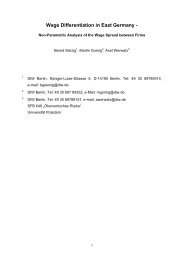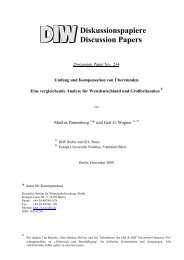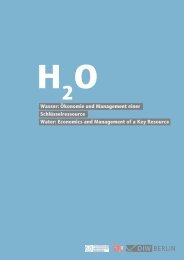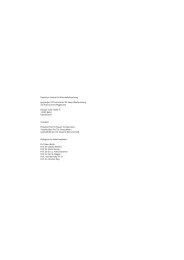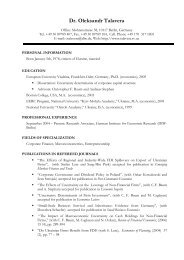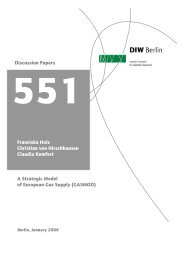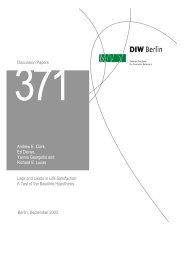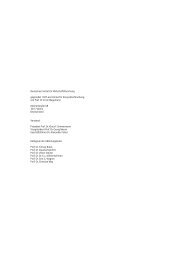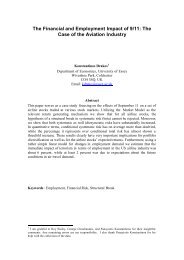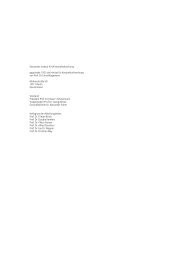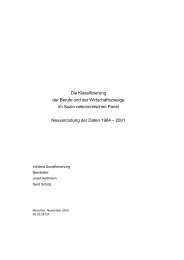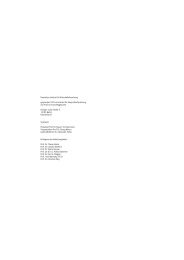Holger Görg and Frederic Warzynski Price cost margins ... - DIW Berlin
Holger Görg and Frederic Warzynski Price cost margins ... - DIW Berlin
Holger Görg and Frederic Warzynski Price cost margins ... - DIW Berlin
Create successful ePaper yourself
Turn your PDF publications into a flip-book with our unique Google optimized e-Paper software.
5 Summary <strong>and</strong> conclusions<br />
There exists a sizeable literature analysing the effect of import competition<br />
on domestic mark-ups. Our paper examines the trade - competition link from<br />
adifferent point of view by investigating whether exporting activity is related<br />
to firms’ price <strong>cost</strong> <strong>margins</strong>. Our paper is related to the recent literature on<br />
exporting <strong>and</strong> productivity, which shows that exporters on average are more<br />
efficient than non-exporters. Based on a model by Bernard et al. (2003) one<br />
may expect firms that are more efficient to charge higher mark-ups <strong>and</strong> to be<br />
more likely to become exporters. We investigate this issue using company<br />
level data for UK manufacturing industries. The measurement of mark-ups<br />
follows the recent approach presented by Hall (1988) <strong>and</strong> Roeger (1995). Our<br />
econometric results show that, on average, exporters have higher mark-ups<br />
than non-exporters. Based on the classification by Rauch (1999) we also<br />
distinguish sectors into homogeneous <strong>and</strong> differentiated goods producing.<br />
This distinction shows that we only find higher mark-ups for exporters in<br />
differentiated goods sectors, not in homogeneous sectors.<br />
6 Appendix<br />
The distinction of industries into differentiated <strong>and</strong> homogeneous goods producing<br />
industries is based on Rauch (1999). The details of his classification<br />
which is based on the SITC Rev. 2 sectoral definition are described at<br />
http://weber.ucsd.edu/˜jrauch/intltrad/. Rauch distinguishes commodities<br />
into three groups: those trade on organised exchanges, those which are reference<br />
priced, <strong>and</strong> others, which are differentiated goods. For our purposes<br />
we amalgamate the first two categories into a group “homogeneous goods”.<br />
We use the “conservative” aggregation used by Rauch. 13 We used the three<br />
to four digit sectoral classification used by Rauch <strong>and</strong> matched this to three<br />
to four digit UK SIC 1992 sectors.<br />
13 It turned out that the “conservative” <strong>and</strong> “liberal” classifications used by Rauch did<br />
not appear to be very different once we amalgamated referenced priced <strong>and</strong> organised<br />
exchange goods into one group.<br />
14



